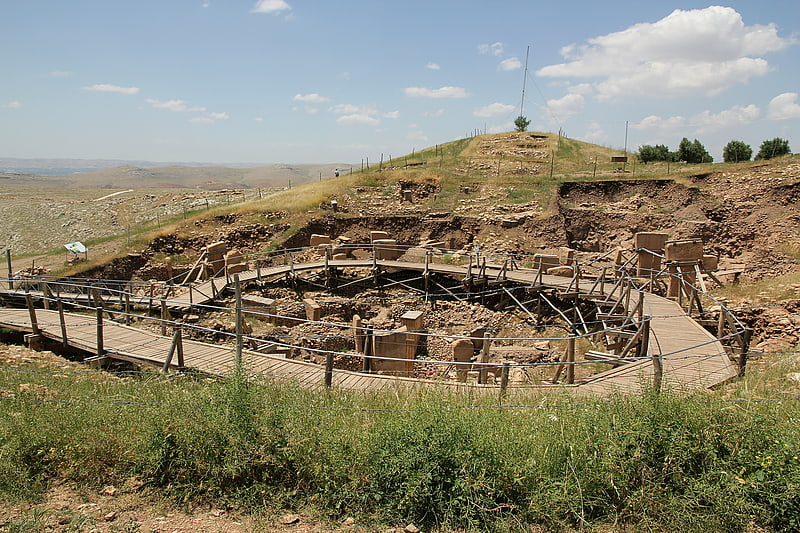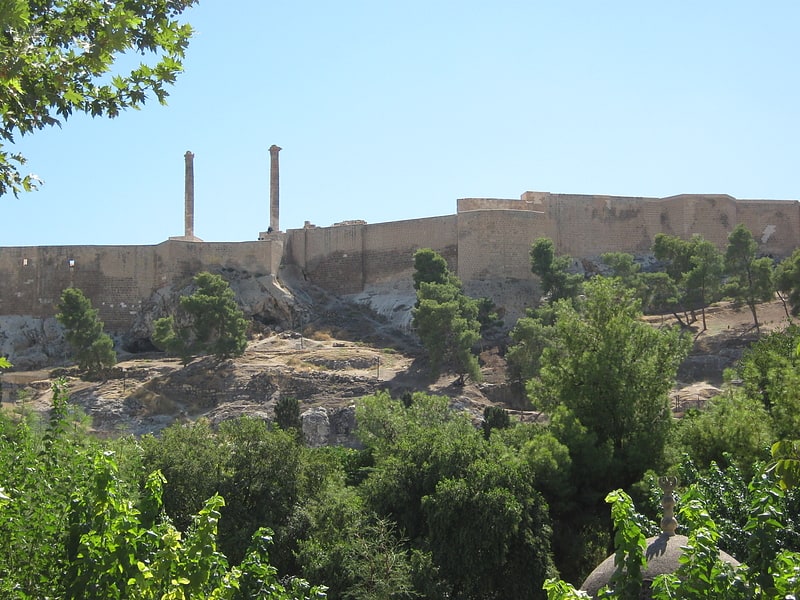Discover 4 hidden attractions, cool sights, and unusual things to do in Urfa (Turkey). Don't miss out on these must-see attractions: Göbekli Tepe, Şanlıurfa Museum, and Şanlıurfa Archaeology and Mosaic Museum. Also, be sure to include Şanlıurfa Castle in your itinerary.
Below, you can find the list of the most amazing places you should visit in Urfa (Sanliurfa).
Table of Contents
Göbekli Tepe

Also known as: Göbeklitepe
Historical landmark in Turkey. Göbekli Tepe is a Neolithic archaeological site near the city of Şanlıurfa in Southeastern Anatolia, Turkey. Dated to the Pre-Pottery Neolithic, between c. 9500 and 8000 BCE, the site comprises a number of large circular structures supported by massive stone pillars – the world's oldest known megaliths. Many of these pillars are richly decorated with abstract anthropomorphic details, clothing, and reliefs of wild animals, providing archaeologists rare insights into prehistoric religion and the particular iconography of the period. The 15 m -high, 8 ha tell also includes many smaller rectangular buildings, quarries, and stone-cut cisterns from the Neolithic, as well as some traces of activity from later periods.
The site was first used at the dawn of the Neolithic period, which in Southwest Asia marks the appearance of the oldest permanent human settlements anywhere in the world. Prehistorians link this Neolithic Revolution to the advent of agriculture, but disagree on whether farming caused people to settle down or vice-versa. Göbekli Tepe, a monumental complex built on the top of a rocky mountaintop, far from known sources of water and to date produced no clear evidence of agricultural cultivation, has played a prominent role in this debate. The site's original excavator, German archaeologist Klaus Schmidt, described it as the "world's first temple": a sanctuary used by groups of nomadic hunter-gatherers from a wide area, with few or no permanent inhabitants. Other archaeologists challenged this interpretation, arguing that the evidence for a lack of agriculture and a resident population was far from conclusive. Recent research has also led the current excavators of Göbekli Tepe to revise or abandon many of the conclusions underpinning Schmidt's interpretation.
First noted in a survey in 1963, the importance of the site was recognised by Schmidt, who directed excavations there from 1995 until his death in 2014. Since then, work has continued under the auspices of Istanbul University, Şanlıurfa Museum, and the German Archaeological Institute, under the overall direction of Turkish prehistorian Necmi Karul. It was designated a UNESCO World Heritage Site in 2018, recognising its outstanding universal value as "one of the first manifestations of human-made monumental architecture". As of 2021, less than 5% of the site has been excavated.[1]
Şanlıurfa Museum

Also known as: Şanlıurfa Arkeoloji ve Mozaik Müzesi
Museum in Şanlıurfa, Turkey. Şanlıurfa Museum is an archaeological museum in Şanlıurfa, Turkey. It is located at 11 Nisan Fuar Caddesi, Şanlıurfa. In this museum, findings from the surrounding areas, i. e. from Göbekli Tepe and from Harran, are exhibited, as well findings from the Southeastern Anatolia Project.
The museum was inaugurated in 2015; it has 3 floors and covers 2,500 square meters of indoor space. The old museum located at Çamlık Caddesi was opened in 1969 with a display area of 1500sq.m. Later on annexes were added. Before that, archaeological finds were displayed in the rooms of the Şehit-Nüsret-elementary school, therefore in Atatürk-elementary school.
It includes the Urfa Man statue, dated c. 9000 BC (11,000 years ago), being considered as the oldest life-sized sculpture of a human already discovered.[2]
Şanlıurfa Archaeology and Mosaic Museum

Museum. Şanlıurfa Archaeology and Mosaic Museum is a museum in Şanlıurfa, Turkey. The museum contains remains of Şanlıurfa, Harran, and ruins found in the hydroelectric dam reservoirs of Atatürk Dam, Birecik Dam and Karkamış Dam.[3]
Address: Camlik Caddesi, 63200 Sanliurfa
Şanlıurfa Castle

Additional information needed
Şanlıurfa Castle, or Urfa Castle in short, is a castle overlooking the city center of Şanlıurfa (previously Edessa), Turkey. The castle was built by the Osroene in antiquity and the current walls were constructed by the Abbasids in 814 AD. Today, the castle functions as an open-air museum.[4]